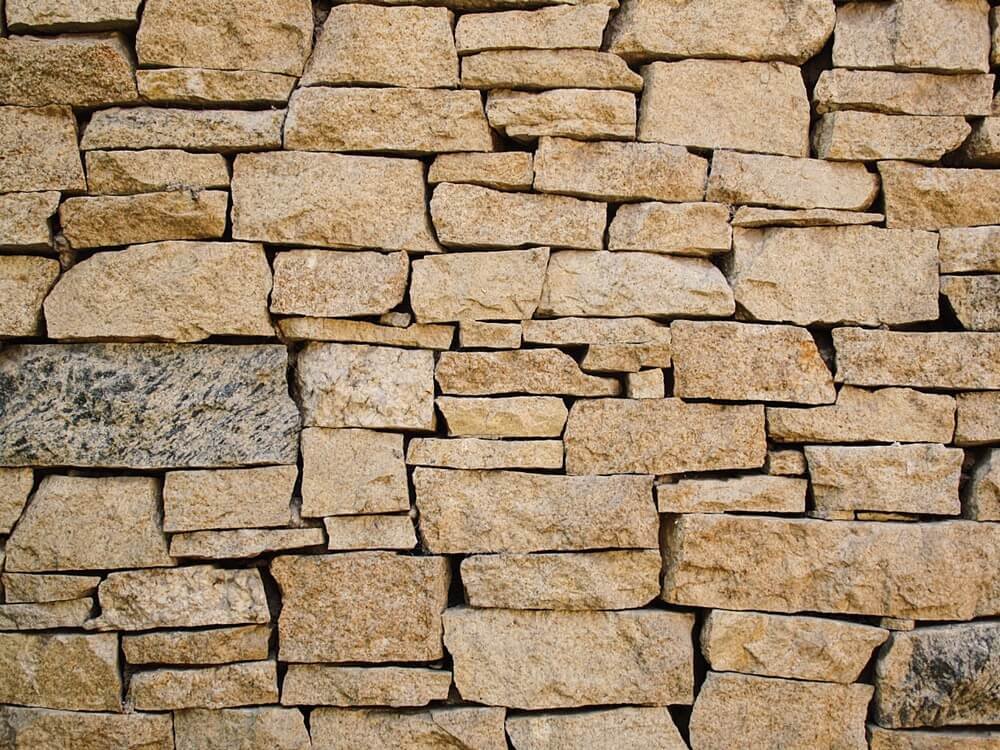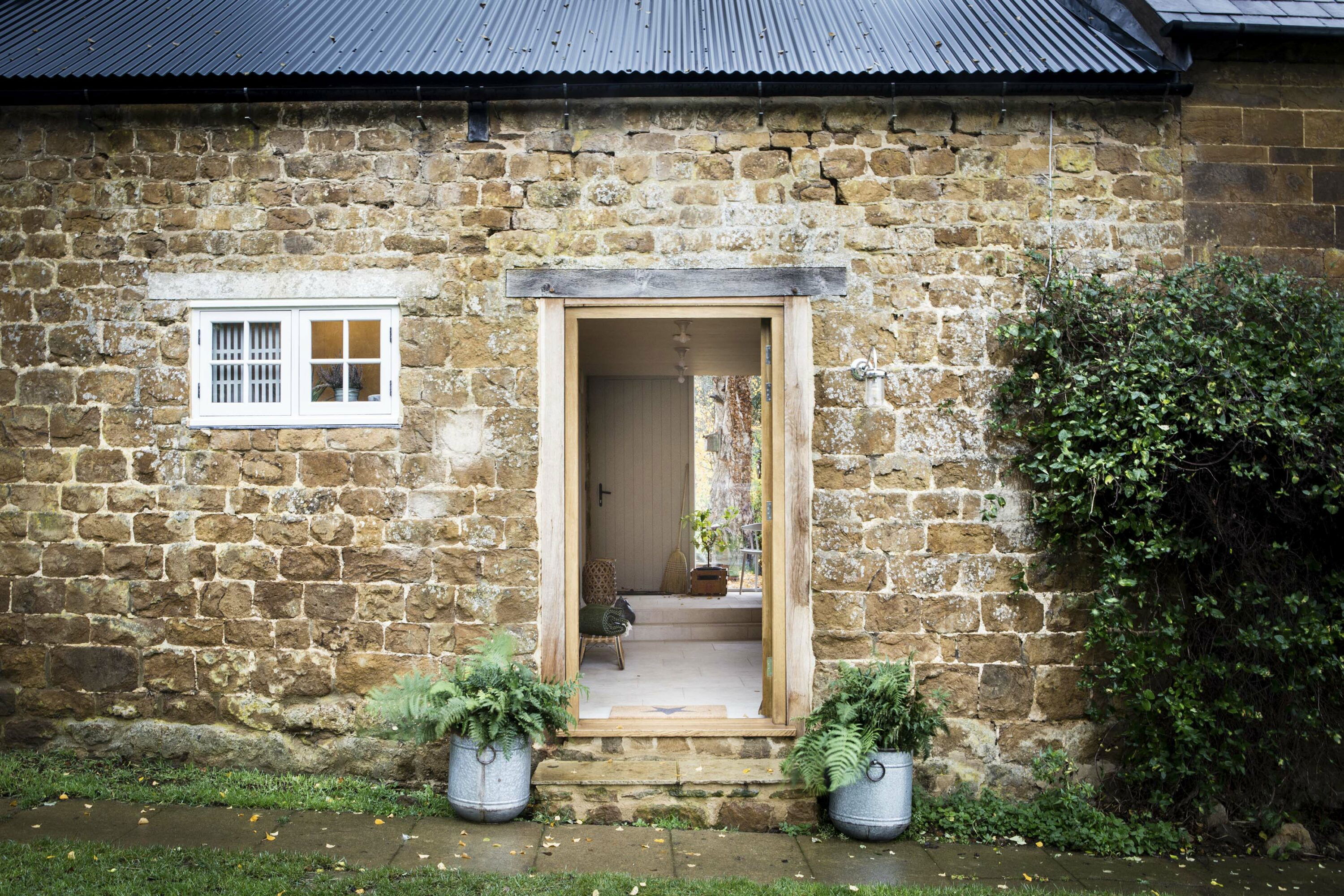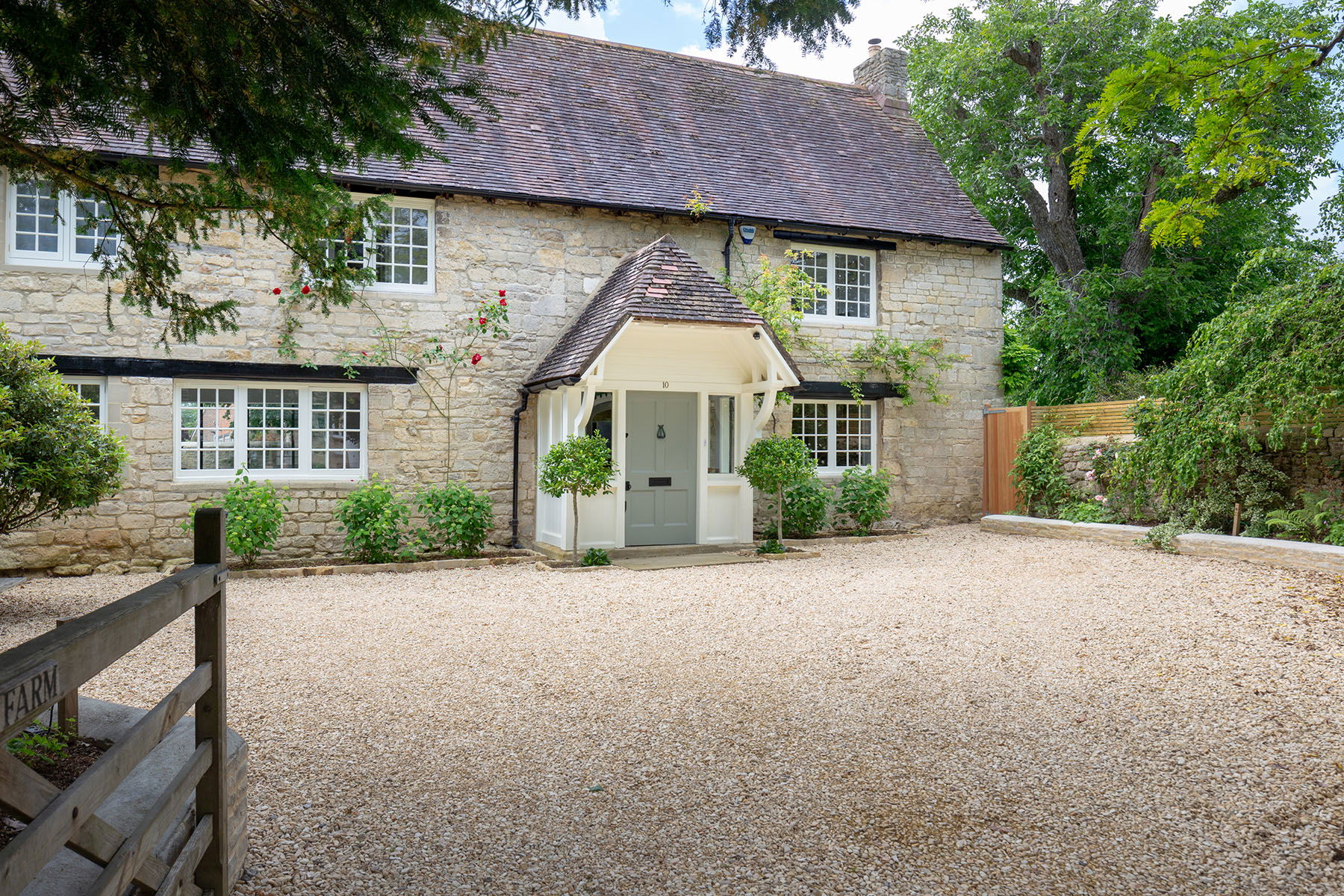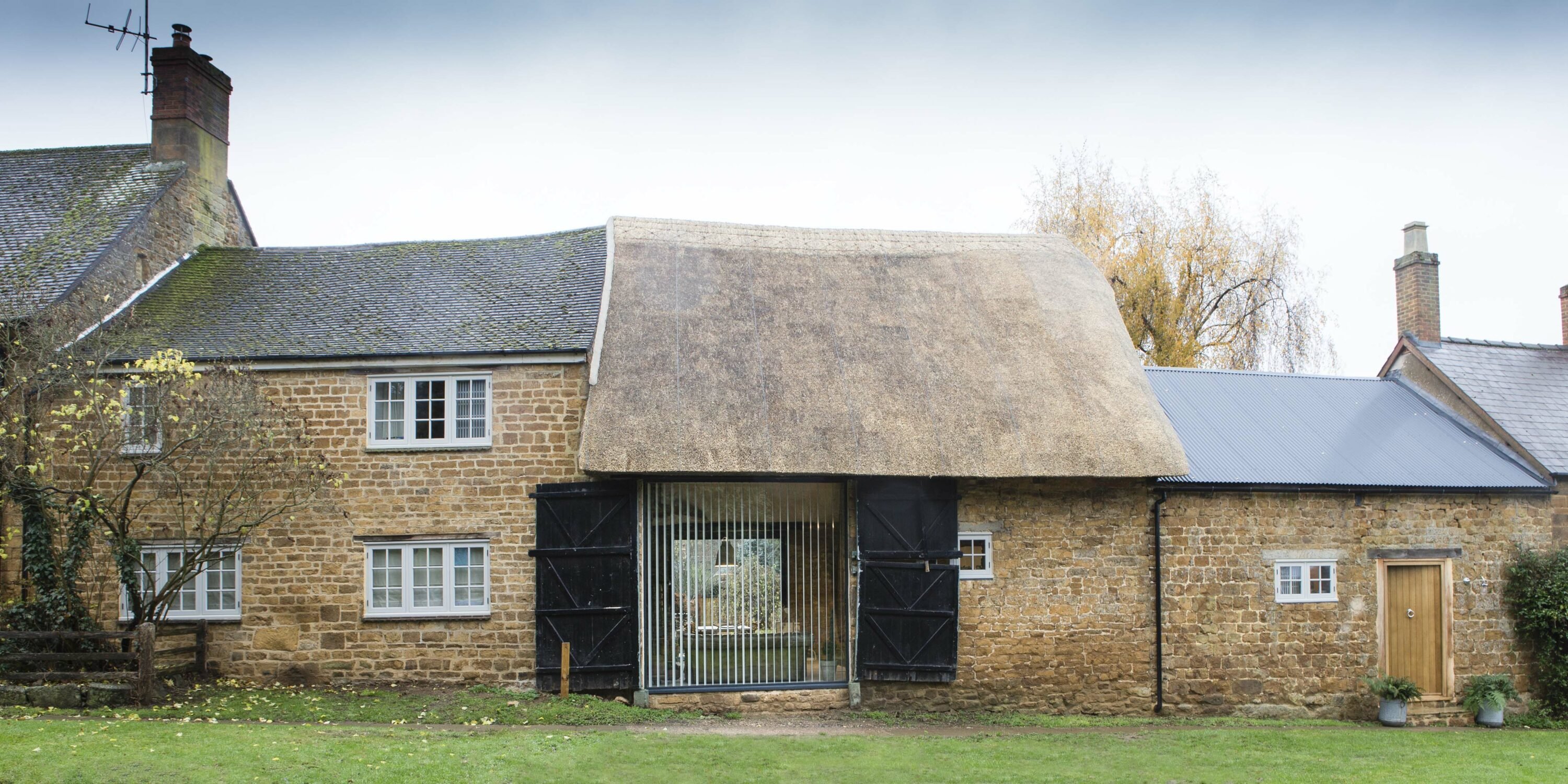
A Guide to Traditional Cotswold Materials and Contemporary House Design
The architecture of the Cotswolds is defined by the local geology, where buildings have been formed by the materials that are locally quarried from the ground they rest upon. The mellow weathered appearance of the Cotswold stone buildings is renowned across the UK, the materials and craftsmanship used to create these buildings make the area one of the richest architecturally. How can HollandGreen as contemporary architects provide the vision and expertise to work with these local materials to create designs that feel as though they belong to the landscape?
What traditional materials are used in the Cotswolds, what makes them special and where are they found?
The Cotswolds sits upon a base of oolitic limestone which has been quarried to provide the building materials for the buildings and houses that sit within the landscape. This is most visible in the walls and the roofs of the buildings we see.

Limestone walling
The warmth of the stone walls of buildings is intrinsic to the identity and character of the Cotswolds. The colour varies from honey-coloured, gold and pearly white depending on the iron oxide content in the layer or vein the stone has been quarried from. As such we at HollandGreen believe it is important to consider the local variation in colour when specifying stone.
Most houses in the Cotswolds have roughly dressed coursed stone walls with rubble filled cavity. Though more formal houses have neat ashlar dressed or carved stone with minimal 3mm mortar beds.
Stone Slate
One of the oldest types of roof construction alongside thatch, as some limestone used to be found on the surface and was referred to as ‘presents’ by the locals that collected it for use as a roof covering. The collected or quarried sandstone is laid out in the elements and allowed to split into slates naturally through frost action. This results in completely uneven slate sizes.
The slates are laid in courses of diminishing size, with the largest at the eaves and the smallest at the ridge. The natural thickness of the stone tiles meant that the walls of traditional houses had to be thicker than other construction types in order to support the weight of the roofs.


From what quarries should the stone be sourced?
The diversity of Cotswolds’ geology has led to the establishment of many quarries across the county. Depending on the location of the quarry and the current layer of the sourced stone its colour will vary, we use our understanding of the variety of these quarries to specify stone that would best fit our design and purpose.
Tinker’s Barn Quarry near Stow-on-the-Wold
The quarry has been established for over 30 years, sourcing both building stone and roofing slates, the stone has a distinctly more neutral colour scheme which is adaptable both to renovation and new build projects.
Oathill Quarry near Temple Guiting in Gloucestershire
Offering a selection of colours (from cream to gold), the quarry is famed for the extraction of block stone which then can be processed to a variety of products like building stones to polished tiles.


The quarry provides a selection of colours and finishes, the colours are subtler varying from cream to grey undertones. While the finishes provide the opportunity to create a rustic feel through random chopped stone or more elegant option with neatly sawn stone.
Some other well-known and trusted local quarries include:
- Grange Hill in Naunton
- Westington near Chipping Campden and Moreton-in-Marsh
How can HollandGreen Architects make contemporary architecture work with existing buildings and traditional materials?
There are two completely different scenarios to buildings with traditional materials:
Altering and extending an existing listed or traditional home in a contemporary style
If you want to use traditional materials in an extension, they can still be sourced at local quarries, though care must be taken in specifying or sourcing the new material. The stone must have the same colour aesthetic and therefore must be sourced from the same quarry. Even then, it is likely that the stone could be quarried from a different layer or vein and the colour may not be consistent.
Newly built limestone walls and slate roofs may always contrast with those of the existing house, simply due to the ageing process. Walls and slates will grow moss and show signs of weathering that newly quarried materials will not. Though some roofers will recommend smothering the newly laid roof in bioactive yoghurt to promote growth, a better practice would be to scrape the existing roof clear of moss yearly as a good building maintenance practice.

To avoid running the new and old materials into one and other, HollandGreen has in the past found it effective to emphasise what is new and what is old. The strength of the existing house is in the character of the traditional details and aesthetics of the materials, and these should be framed and celebrated with the contemporary addition. A technique frequently used to do this is to junction the old and new with glass, creating a clear distinction between the old and new.
Another approach is to use entirely contemporary materials in the extension, therefore removing the requirement to match the existing stone or slate. A completely contemporary clad extension should still be sympathetic to the existing house to fit within the context and avoid creating potential issues with the planning process.
Building a new house from scratch within the context of the Cotswolds
When designing a contemporary new build house, it is not always necessary to use traditional materials, but they can help to identify the house to the surrounding context and will often be seen positively by planners.
The local materials in the Cotswolds have stunning natural aesthetics that can be used in new and exciting forms, uniting contemporary design with age-old techniques and craftsmanship.
Planning to use Cotswolds stone in your build?
As leading high-end residential architects with vast experience in designing using regional materials, we provide architecture services throughout the Cotswolds, Oxfordshire, Buckinghamshire, Berkshire, London, and Surrey,. We’d love to help you plan your Cotswolds new build or renovation. Find out more about how we work or get in touch for an initial meeting with Ben Holland or Stephen Green.
